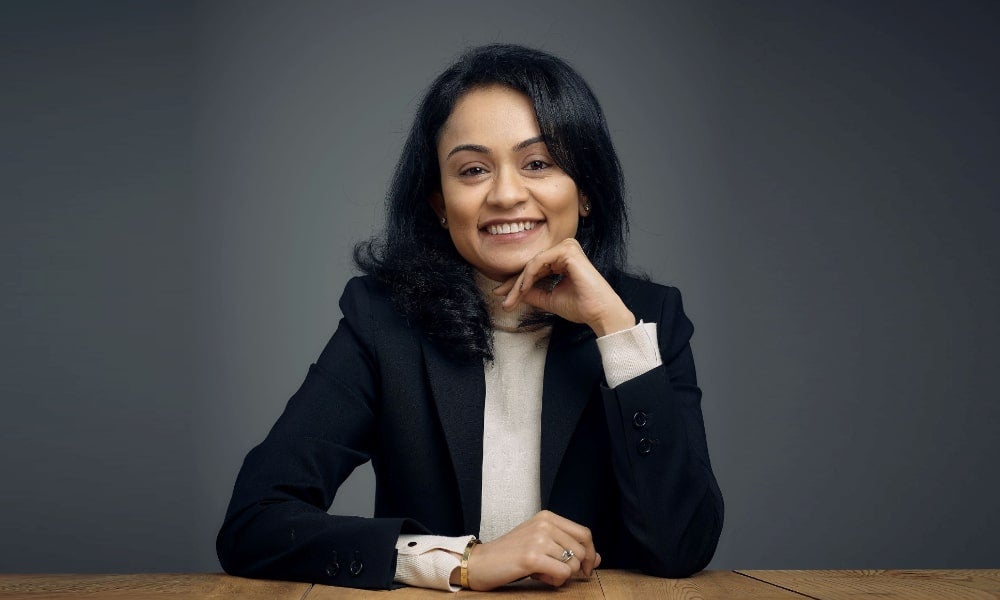How demonstrating vulnerability can improve diversity & inclusion
Demonstrating vulnerability through role modeling and sharing stories are some of the most important ways leaders can help encourage diversity and inclusion
Vulnerability is not usually considered an important leadership skill. However, being vulnerable is “extremely important” in showing up as an inclusive leader, according to Dr Poornima Luthra, an Associate Professor at Copenhagen Business School and a global expert in diversity and inclusion.
“Leaders need to get vulnerable. When we talk about leadership, we understand that we have to be comfortable with some degree of uncertainty and ambiguity," she said. "One of the things that is really powerful is allowing yourself as a leader to share stories where you have perhaps made a mistake and got it wrong, and what you've learned from that and how you've grown from that experience."
Leaders naturally have to exhibit certain levels of control, but Dr Luthra said leaders are not necessarily encouraged to role model vulnerability and think about how this might nurture diversity and inclusion in broader ways. “Role modeling a deep curiosity, or challenging team members around their biases in a positive growth mindset – leaders have a responsibility to nurture psychological safety, right?” she said.

Vulnerability, psychological safety and biases
Dr Luthra, a UNSW Business School visiting scholar who has authored a number of books on diversity and inclusion, said vulnerability is an important contributor to psychological safety: “it starts with leaders being able to lean into that vulnerability and create that environment where it's okay for us to take risks, point out each other's biases and to learn from that, rather than being penalised, shamed and blamed,” she said.
The process of identifying, understanding and breaking down biases is critical to improved diversity and inclusion, and she encouraged leaders to demonstrate vulnerability by potentially asking others to help them recognise where their biases might lie.
“We are inherently biased in the way our mind works. But how do we block bias and ensure we limit is impact on our interactions with others and decisions we take?” asked Dr Luthra, who noted that when it comes to extreme cases of bias such as racism, sexism, homophobia and ableism, these usually need to be handled as per organisational and legal frameworks.
Read more: How Alison Mirams champions gender diversity in the construction industry
Addressing “termite biases”
For more subtle biases, however, she said these are more challenging to deal with as they are usually hidden. For this reason, Dr Luthra calls them “termite biases”, and she explained they are often buried in casual conversations between each other, over coffee or meals, during meetings, hidden in humour or even well-intentioned remarks. “So we really need to be able to have honest conversations and allow ourselves to be vulnerable in calling these biases out,” she said.
In doing so, Dr Luthra said it is important to come from a place of empathy (rather than aggression or passive aggression) and in a spirit of growth, and recognise that everyone's biased (including ourselves). She gave the example of a potential conversation in how to call out and address bias: “Hey, you know, you said that the other day at lunch. And I was just wondering where you're coming from? Perhaps I can give you a different perspective on how that could have resonated with some people, or perhaps that it favoured some and not others? And we can have a dialogue about that.”

Spheres of influence
Addressing bias is not just the job of leaders, but of everyone, according to Dr Luthra. “As individuals, we do have a role,” she said. “Everybody needs to step up. This isn't just for the underrepresented to fight the fight. It isn't just for leaders in organisations. That's why we're here in 2023, when the needle isn't really moving, it's moving marginally. We need to move the needle further and faster, and for that we need everybody to step up.”
There are practical steps that everyone can take to effect change in their own way and capacity, according to Dr Luthra. “When we look at the amount of other challenges we have, it can seem like such a mammoth task – and it is a huge undertaking in most organisations. But I would hate to think that if we went down that path of apathy, where we would land up?” she said.
“So my view is that we need to encourage people within their own spheres of influence. I'm a big believer in the ripple effect, if one person starts behaving more inclusively, then that has an effect on others, who will then continue that out into their own spheres of influence.”
Subscribe to BusinessThink for the latest research, analysis and insights from UNSW Business School
Tackling cookie-cutter syndrome
Dr Luthra also highlighted the challenge of addressing what she calls “cookie-cutter syndrome”, where people are hired, promoted and provided with opportunities for development based on the self-image of managers and leaders responsible for such decisions in an organisation. “They have a certain ‘cookie cutter’ view of who is considered to be successful employee and a successful leader, and they want people who fit and conform to their view,” she said.
“So how do we challenge that? How do we ensure that we are creating systems, structures, policies and practices that are truly inclusive for the diversity that we'd like to see in our organisations, and not just for some? In our organisations we need to challenge those prototypes and molds for who we consider to be successful as an employee, as a leader. That naturally favours some groups in the organisation and not others, which is at odds with true diversity and inclusion.”
Dr Luthra is a UNSW Business School visiting scholar. She recently presented a seminar and facilitated a discussion about diversity and inclusion and leading with vulnerability at UNSW Business School.
